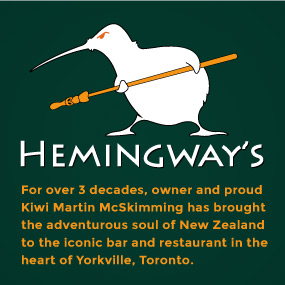New Zealand Chefs Redefining Polynesian Cuisine
The kawakawa leaves are dark as jade and riddled with holes, the telltale bites of looper moth caterpillars. In another kitchen they might be thought compromised and tossed aside, but to Monique Fiso, a chef of Māori-Samoan heritage, they are taonga. According to Māori herbal medicine, the more holes, the better – because caterpillars choose only the finest leaves to feast on. New York Times correspondent Ligaya Mishan reports on the growing number of Polynesian chefs redefining their cuisine worldwide.
In Aotearoa, kawakawa leaves were traditionally chewed or brewed for tea to ease toothaches and abdominal pain, wilted over flames to make a poultice for cuts and stings and burned to banish mosquitoes. The kawakawa tree’s branches cast blessings on the launch of canoes, the birth of children and the dawn of battle.
Such is the cultural freight of what appears, on Fiso’s plate, as a palate cleanser. At an eight-course pop-up dinner served last year in New Zealand wine country, she arranged a few perforated leaves, glossy and candied, around a sorbet of muted celadon suffused with more leaves, their natural bitterness tamped down to a cooling mint with a pinprick of pepper.
Fiso is one of a number of chefs in the Pacific making an eloquent argument for native ingredients and cooking methods, which only in recent years have started appearing at restaurants in New Zealand, Hawaii, Fiji and Samoa, having long been neglected and outright scorned by both locals of nonindigenous descent and the tourists around whom the islands’ economies revolve.
But how do you keep this cuisine alive when its inheritors no longer live in the old ways – when no one has time to dig a pit or to search for the leaves with the most holes? When Fiso started her dinner series two years ago, she struggled: “How are you supposed to open a Māori restaurant when you can’t even get the ingredients?”
For chefs, including New Zealanders Monica Galetti of London’s Mere and Robert Oliver, who was raised in Fiji and Samoa, recovering ancient culinary customs isn’t simply a matter of finding “new” flavours to charm world-weary diners. It’s a political act: an effort to restore a way of life brought to the verge of extinction; to wean the islands off dependence on Western goods; to chart a way forward by looking back. When Fiso serves a plate of kumara gnocchi in a sauce of huhu grubs, which feed on rotten wood and have a taste at once buttery and musty, it’s neither novelty nor dare. This was the food of her people, now brought to the light of the modern day.
Original article by Ligaya Mishan, The New York Times, August 6, 2018.















